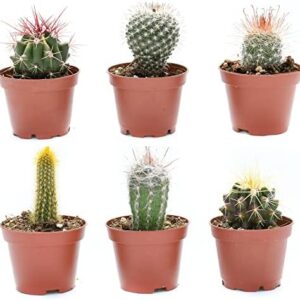Ah, the humble succulent – the perfect low-maintenance plant for those of us with busy lives and black thumbs. Succulents are known for their ability to thrive in arid conditions and their unique, fleshy leaves that store water for long periods of time. But even these resilient little plants can show signs of stress if they’re not given the right care and attention.
So, how can you tell if your succulent is stressed? And more importantly, what can you do to help it thrive once again? Let’s take a closer look at the telltale signs of a stressed succulent and how you can give it the proper TLC it needs.
One of the most common signs that your succulent is stressed is yellowing or browning leaves. This can be caused by a variety of factors, such as overwatering, underwatering, poor soil drainage, or inadequate sunlight. If you notice your succulent’s leaves starting to change color, it’s important to address the issue promptly to prevent further damage.
Another indication that your succulent is stressed is wilting or shriveling leaves. When a succulent is not getting enough water, its leaves will start to shrivel and lose their plump, fleshy appearance. On the other hand, if you’re overwatering your succulent, its roots may become waterlogged, leading to wilting leaves as well. Finding the right balance of water for your succulent is key to keeping it healthy and happy.
In addition to changes in leaf color and texture, a stressed succulent may also exhibit stunted growth or a lack of new growth. If your succulent has stopped growing or seems to be struggling to produce new leaves, it may be a sign that it’s not getting the nutrients it needs to thrive. Proper feeding and fertilizing can help jumpstart your succulent’s growth and improve its overall health.
So, how can you help your stressed succulent thrive once again? Here are a few simple tips to get your plant back on track:
1. Assess its environment: Take a good look at where your succulent is located. Is it getting enough sunlight? Succulents thrive in bright, indirect light, so make sure it’s placed in a spot where it can soak up the sun’s rays without getting scorched. If your succulent is not getting enough light, consider moving it to a sunnier location or investing in a grow light to supplement its light needs.
2. Adjust your watering schedule: One of the most common mistakes people make with succulents is overwatering. These plants are built to withstand long periods of drought, so they only need to be watered sparingly. Allow the soil to dry out completely between waterings to prevent root rot and other moisture-related issues. Use a well-draining soil mix and pots with drainage holes to ensure excess water can escape easily.
3. Feed your succulent: While succulents don’t need to be fertilized as often as other plants, a little boost of nutrients can go a long way in helping them thrive. Use a balanced, water-soluble fertilizer diluted to half strength and apply it to the soil every few weeks during the growing season. Be sure to follow the manufacturer’s instructions for best results.
4. Repot if necessary: If your succulent is struggling in its current pot, it may be time to repot it into a larger container with fresh soil. Choose a pot that is just slightly larger than the current one, as succulents prefer snug quarters. Gently remove the plant from its old pot, shake off any excess soil, and repot it in the new container with fresh soil. Allow the plant to settle in for a few days before resuming its regular care routine.
5. Keep an eye out for pests: Just like any other plant, succulents can fall victim to pests such as mealybugs, aphids, and spider mites. Inspect your plant regularly for signs of infestation, such as sticky residue, webbing, or visible insects. If you spot any pests, gently remove them with a cotton swab dipped in rubbing alcohol or treat the plant with a natural insecticidal soap.
By paying attention to the signs of stress in your succulent and taking proactive steps to address the issues, you can help your plant thrive and continue to bring joy and beauty to your space. With a little care and attention, your succulent will be back to its happy, healthy self in no time. So, roll up your sleeves, grab your watering can, and get ready to give your succulent the love it deserves. Happy gardening!






